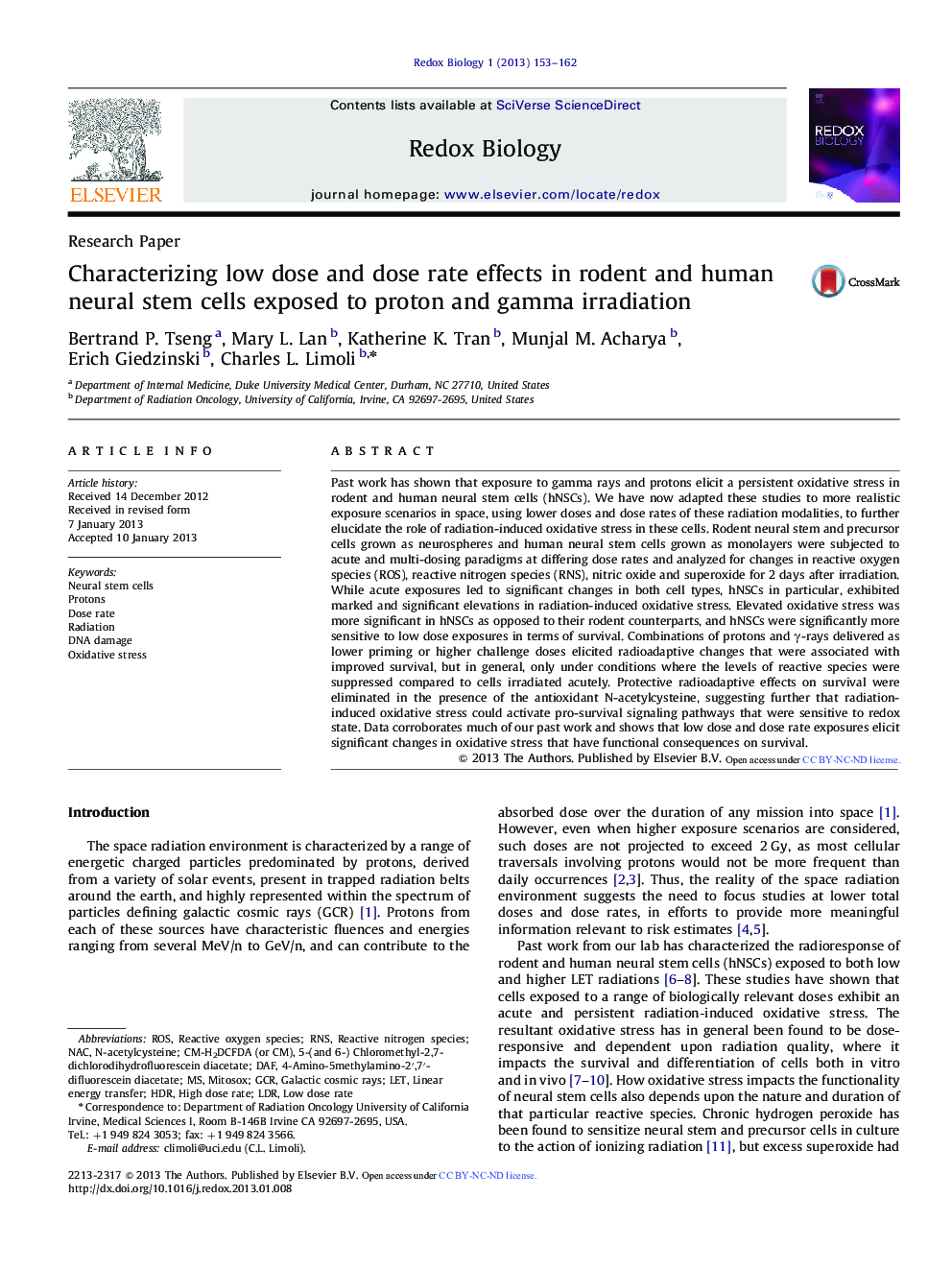| Article ID | Journal | Published Year | Pages | File Type |
|---|---|---|---|---|
| 1923241 | Redox Biology | 2013 | 10 Pages |
Past work has shown that exposure to gamma rays and protons elicit a persistent oxidative stress in rodent and human neural stem cells (hNSCs). We have now adapted these studies to more realistic exposure scenarios in space, using lower doses and dose rates of these radiation modalities, to further elucidate the role of radiation-induced oxidative stress in these cells. Rodent neural stem and precursor cells grown as neurospheres and human neural stem cells grown as monolayers were subjected to acute and multi-dosing paradigms at differing dose rates and analyzed for changes in reactive oxygen species (ROS), reactive nitrogen species (RNS), nitric oxide and superoxide for 2 days after irradiation. While acute exposures led to significant changes in both cell types, hNSCs in particular, exhibited marked and significant elevations in radiation-induced oxidative stress. Elevated oxidative stress was more significant in hNSCs as opposed to their rodent counterparts, and hNSCs were significantly more sensitive to low dose exposures in terms of survival. Combinations of protons and γ-rays delivered as lower priming or higher challenge doses elicited radioadaptive changes that were associated with improved survival, but in general, only under conditions where the levels of reactive species were suppressed compared to cells irradiated acutely. Protective radioadaptive effects on survival were eliminated in the presence of the antioxidant N-acetylcysteine, suggesting further that radiation-induced oxidative stress could activate pro-survival signaling pathways that were sensitive to redox state. Data corroborates much of our past work and shows that low dose and dose rate exposures elicit significant changes in oxidative stress that have functional consequences on survival.
Graphical abstractFigure optionsDownload full-size imageDownload as PowerPoint slideHighlights► Low dose irradiation altered the redox state of rodent and human neural stem cells. ► Reactive oxygen and nitrogen species were increased significantly after exposure. ► Low dose exposure caused radioadaptation that promoted survival after higher doses. ► Antioxidant treatment reduced radiation-induced oxidative stress and radioadaptation. ► Radiation-induced oxidative stress has functional significance in neural stem cells.
